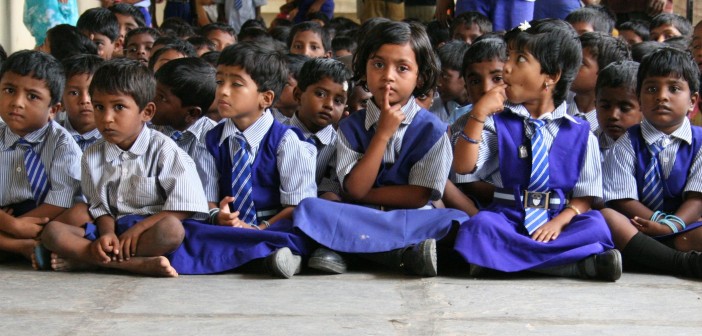Did you ever try to Google search “education for girls in Russia” and “education for girls in India”? I did. The difference of images that appeared on my screen was shocking. If the internet is to be believed, a Russian girl’s education involved semi-nudity while an Indian education posits the complete opposite view: modestly dressed girls sitting on the school floor with books on their laps. But the one that touched my heart the most was an image of a beautiful little Indian girl in a cage; her eyes were full of fear as though she asked a question: why do you hate me?
Of course, you shouldn’t always believe what you see on the internet, but within these extremes there are some painful truths. I am Russian myself, I know how important the education system is, and it’s shame that even during my school years, many years ago, some girls were skipping lessons for sake of fun. I know for sure, this problem still exists, in different schools with different pupils. I guess it’s human nature to take these privileges for granted.
In India, little girls do not get to make a choice of skipping class or not. Their choices are much more limited, so limited it will bring a tear to your eye. While I weep, somewhere miles away, in India, girls of the same age are crying in preparation for an unwanted pre-arranged marriage because their parents can’t afford their education, and the possibility to get a good degree and a decent job is a fantasy.
I wonder, if India has the world’s third-largest number of billionaires, why do so many children still not receive a good education? Did you know that the Indian Constitution provides free and compulsory education as a fundamental right to children between the ages of 6 and 14? Yet, after my research on that, I was speechless: government schools have mostly overcrowded classes, unsanitary conditions, rooms with no electricity or not even professionally trained teachers. This is why most of the parents keep their daughters at home to do farm work or household chores before they get married instead of completing a primary education. But is money really the only reason?
The life of the “girl child” in India is one of under-privilege while many feel cursed for their gender. In very poor areas of India hospitals are more likely to look after the male child, while a girl child who gets sick is expected to heal naturally. Isn’t that horrifying? According to Angeli Foundation “India’s love for a male child has led to the cold-blooded murder of three million female children over the last decade. Studies have shown that 500,000 girls a year go missing in India as a result . From female foeticide to limiting healthcare and education in favour of male siblings, to bride burnings, unreported rapes and acid attacks, inequality in India exists from womb to womanhood”.
There are many charity companies and foundations online but it seems not all of them can provide the solution on how to resolve this problem. Angeli Foundation, created by Angeli Kapoor Puri, sponsors girls through Secondary and Higher Education and counsel their parents on the importance of educating daughters. But not only that, the Mother and Child Clinics & Counseling Centres for Crime against Women in the slums of New Delhi are also in process of setting up.
I’d love to believe that sooner or later, the government of India will focus not only on the country’s economy but also on the country’s wellbeing, and crucially the importance of education. Who knows maybe that little girl behind the bars featured in the picture one day will become strong and independent woman and will make a difference in this world. For now, only we can make a difference in her life, she doesn’t need a doll or new dress, all she needs is hope that there is future she can choose. Maybe we can give her that choice.





